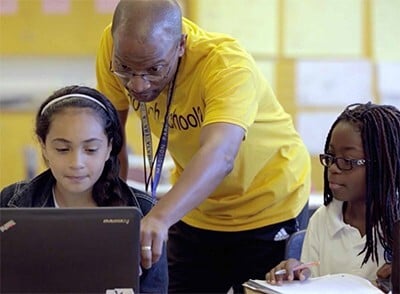
Oakland CA schools have a problem trying to teach their academically diverse student body. Kilian Betlach, the principal of Oakland’s Elmhurst Community Prep says that while one third of Elmhurst’s kids are at grade level in reading and math, the remaining two thirds are from one to four years behind. No doubt Principal Betlach’s school shares the same problem with many inner-city, high-poverty middle schools.
The question of how best to address this problem is complicated by lack of staff and lack of funds -- another common problem with inner-city schools. With too few teachers, how can they keep the slower learners from falling farther behind without denying faster learners the time they deserve and thereby cheating them all of a decent education? Unfortunately the answer to this problem is not to be found in the old factory model of education most of us grew up with.
The factory model with its emphasis on a child’s chronological age rather than their abilities is a holdover from the Industrial Revolution when schools were intended to furnish students with just enough education to get them out of school and into the factories then springing up everywhere. Unlike today when individual learning needs are at least understood -- if not always accommodated -- there wasn’t even an attempt at “differentiation,” defined as teaching students in the same class with different levels of achievement.
California recently decided that the best way to approach differentiation was with the educational “blended model.” This model is defined as a combination of brick-and-mortar schooling with online education and some element of student control over time, place, path, and/or pace of learning. Sounds wonderful, but as Principal Betlach notes, “Teachers are told to sprinkle your differentiation fairy dust“ but with big classes and no aids, “it’s not possible.”
Fortunately some wealthy benefactors (including Bill Gates) got behind the experiment in blended learning and provided funds for the necessary technology and teacher training.
The technology helps free teachers from whole-class instruction. Using what is called the “station rotation model” students move from computers to teacher-led instruction to group projects.
While the results of this experiment have yet to be tabulated it seems both teachers and students like what they see. Teachers admit they found the blended model difficult at first, though now they hope they never have to go back.
